Ænateans
Ynamok: Ænadám /aiːnatauːm/
The ænateans1 are the ruling ethnic group in Ænadó, an empire in northeastern Túlmikkía. They are descendants of Enans from southeastern Emlas,who colonized the region and later became independent as their mother cities declined and finally became part of the empire of Dalra.
Ænateans are renowned for their jewelry, purple cloth, fine pottery, intricately carved furniture, raisin wine and high-quality olive oil.
Initially, the three colonies -Nat, Ónon and Pamsa- fought each other with the help of local tribes; Nat was aided by Danteks from the Fom Islands, while the other two recruited Taxótans from the Talax Mountains as mercenaries. Nat emerged victorious and united the region into Ænadó, and soon the ænateans began founding their own colonies, especially in southern Laxilþía.
The laxilþían cities were eventually lost in a bitter war with a new power in that part of the world, Resak, and the ænateans and Rexans have been locked in a cold war ever since. Despite this, Ænadó has prospered via maritime trade, and ænatean ships are found in virtually every port around the Akral Sea.
Jewels made of precious metals, emeralds or glass beads are popular, with diadems in form of small crowns being popular among most women. Elaborate nose-jewels and labrets are common among nobles.
Hairstyles vary significantly between cities and regions, with varying influences from native taxótans and danteks, while beards are worn by most men. Tattoos are generally more common than face- and body-paint, usually featuring straight lines interspersed with stylized floral motifs.
Traditionally, a parrot must be present during these rituals, where it acts as a messenger for the gods to report on the people's piety.
Right before burial, a priest cuts the end of a sash which has been tied to the dead's waist, signifying their rebirth in the afterlife.
The ænateans1 are the ruling ethnic group in Ænadó, an empire in northeastern Túlmikkía. They are descendants of Enans from southeastern Emlas,who colonized the region and later became independent as their mother cities declined and finally became part of the empire of Dalra.
Ænateans are renowned for their jewelry, purple cloth, fine pottery, intricately carved furniture, raisin wine and high-quality olive oil.
History
After the fall of the Ilaxarans, first civilization of eastern Emlas, a number of new states appeared in the region, some inhabited by native cultures, others by newcomers such as enans from Aam in northwestern Túlmikkía, the latter which established a thalassocracy with colonies as far as Laxilþía and northeastern Túlmikkía.Initially, the three colonies -Nat, Ónon and Pamsa- fought each other with the help of local tribes; Nat was aided by Danteks from the Fom Islands, while the other two recruited Taxótans from the Talax Mountains as mercenaries. Nat emerged victorious and united the region into Ænadó, and soon the ænateans began founding their own colonies, especially in southern Laxilþía.
The laxilþían cities were eventually lost in a bitter war with a new power in that part of the world, Resak, and the ænateans and Rexans have been locked in a cold war ever since. Despite this, Ænadó has prospered via maritime trade, and ænatean ships are found in virtually every port around the Akral Sea.
Culture
Apparel
Ænatean clothing resembles that of the enans; men wearing short, wide, long-sleeved tunics (with or without belt), while women wear skirts of varying length and ponchos. The most common material is wool, while linen is more common for the wealthy, and footwear is usually made of sheepskin or woven plant-fibers. Colourful clothes are favoured by all ænateans, often featuring decorative borders and stripes, sometimes gilded or bejeweled, and purple clothing is common among the aristocracy; Ænadó is one of the few places that provide easy access to purple dye, harvested from local mollusks.Jewels made of precious metals, emeralds or glass beads are popular, with diadems in form of small crowns being popular among most women. Elaborate nose-jewels and labrets are common among nobles.
Hairstyles vary significantly between cities and regions, with varying influences from native taxótans and danteks, while beards are worn by most men. Tattoos are generally more common than face- and body-paint, usually featuring straight lines interspersed with stylized floral motifs.
Art
Carpentry
Wooden ænatean furniture such as chests, tables and beds are highly sought after as luxury goods due to their intricate, often painted and gilded carvings. As with the enans, ænatean style can be hard to define due to it being highly influenced by both emlatine and túlmikkían traditions, and it's only relatively recently that a distinct style has emerged.Pottery
Ænatean pottery is popular among nobles in Vagalkan and Dalra, and is one of Ænadó's main exports. Plates are an important status symbol for ænatean aristocrats, and thus usually feature the finest painted and gilded decorations.Cuisine
Peanuts and maize are the mainstay in ænatean diet, along with figs, sweet potatoes, tomatoes, fish, guinea pigs, mutton and domesticated rails. Like the enans, maize is usually roasted rather than ground into flour, while peanuts are generally eaten boiled or roasted, and peanut oil is preferred instead of olive oil due to the latter produced primarily for exporting. The fertile coast and valleys of Ænadó support a number of different fruits and vegetables such as pineapples, figs, pomegranates, passion fruits and papaya. Corn beer is the main beverage of commoners, while wine, especially raisin wine, is consumed by nobles.
Ænatean commoners sit on the floor during meals and the food is served on a palm leaf or platter, those who can afford it usually own a particularly fine platter which is used during festivals or when visited by honoured guests. In contrast, nobles sit on benches and each has their own plate during meals.
Ænatean commoners sit on the floor during meals and the food is served on a palm leaf or platter, those who can afford it usually own a particularly fine platter which is used during festivals or when visited by honoured guests. In contrast, nobles sit on benches and each has their own plate during meals.
Language
Main article: Ynamok.Religion
Ænateans worship a mixed pantheon of enan, toxótan and dantek deities. The most elaborate rituals are performed within the temples by men, as they are believed to less connected to the gods than women and thus sometimes spend days to make sure their prayers are heard. Animal and occasional human sacrifices are common, with the bodies being burned along with food and incense afterwards.Traditionally, a parrot must be present during these rituals, where it acts as a messenger for the gods to report on the people's piety.
Major deities
Gaal
Gaal, also known as Kaala, is the god of the sea and patron deity of the city of Pamsa.Lomó
Lomó is goddess of the moon and patron deity of the city of Ónon. She's known as Lom in Nat, Hlom in Pamsa and Omm by ænateans living in Vagalkan.Únú
Únú or Húnú is the god of the sun and patron deity of the capital of Nat.Funerary practices
Like enans, burial is the norm among ænateans after a period of morning, where food, drink and incense are burned to provide the soul of the dead with nourishment in the afterlife. Nobles are mummified by drying the body over fire and then wrapped in linen, and recently it has become customary to place a golden mask over their face.Right before burial, a priest cuts the end of a sash which has been tied to the dead's waist, signifying their rebirth in the afterlife.
Warfare
The ænateans rule one of the best navies in Gætíus' World, though currently it's mostly used to protect their merchant fleet against pirates and rexan attacks rather than actual warfare.
Their weapons and arms are generally similar to traditional enan ones, featuring swords (kaagymta) and daggers with distinct broad tips, making the blades resemble elongated axe-heads, along with spears and bows, while armour tends to be restricted to plates protecting the chest, greaves, diadem-like helmets adorned with feathers, and shields of all shapes and sizes.
Their weapons and arms are generally similar to traditional enan ones, featuring swords (kaagymta) and daggers with distinct broad tips, making the blades resemble elongated axe-heads, along with spears and bows, while armour tends to be restricted to plates protecting the chest, greaves, diadem-like helmets adorned with feathers, and shields of all shapes and sizes.
1Original icelandic: Ænatar, singular: Ænati




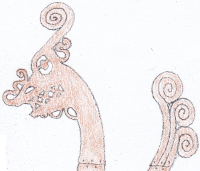
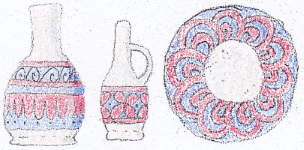
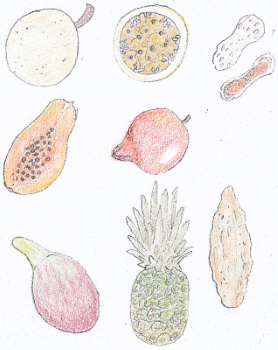
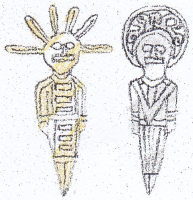
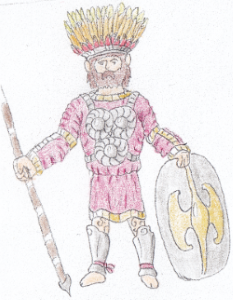
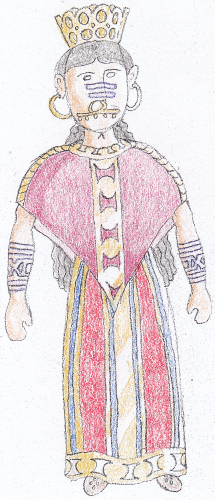

Comments